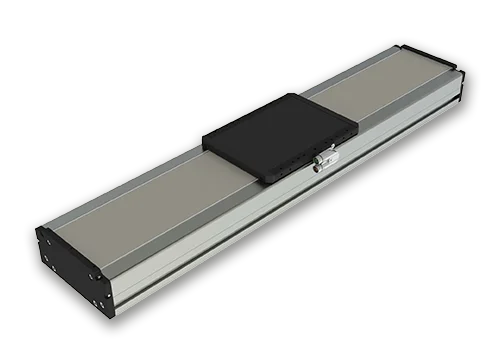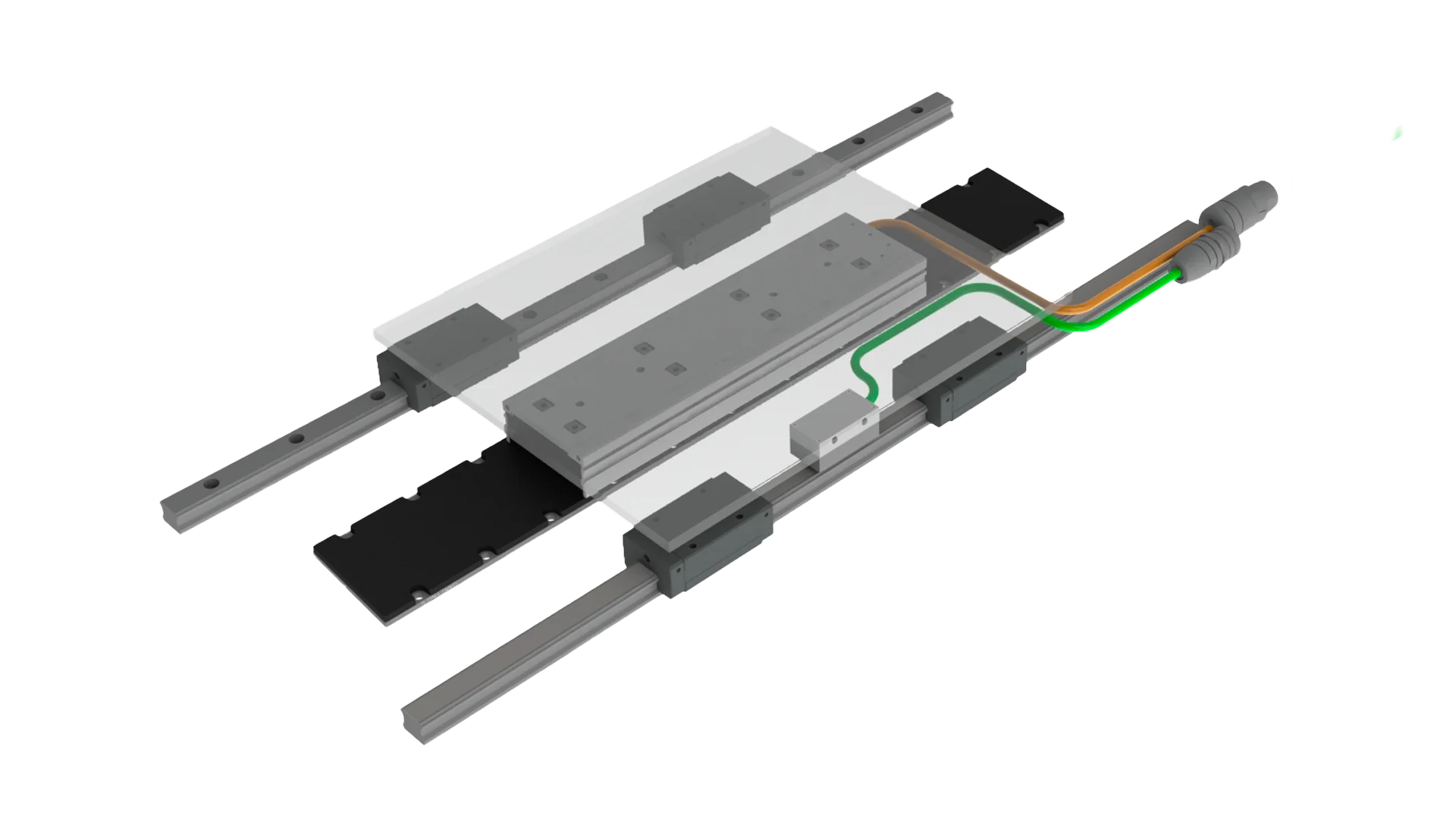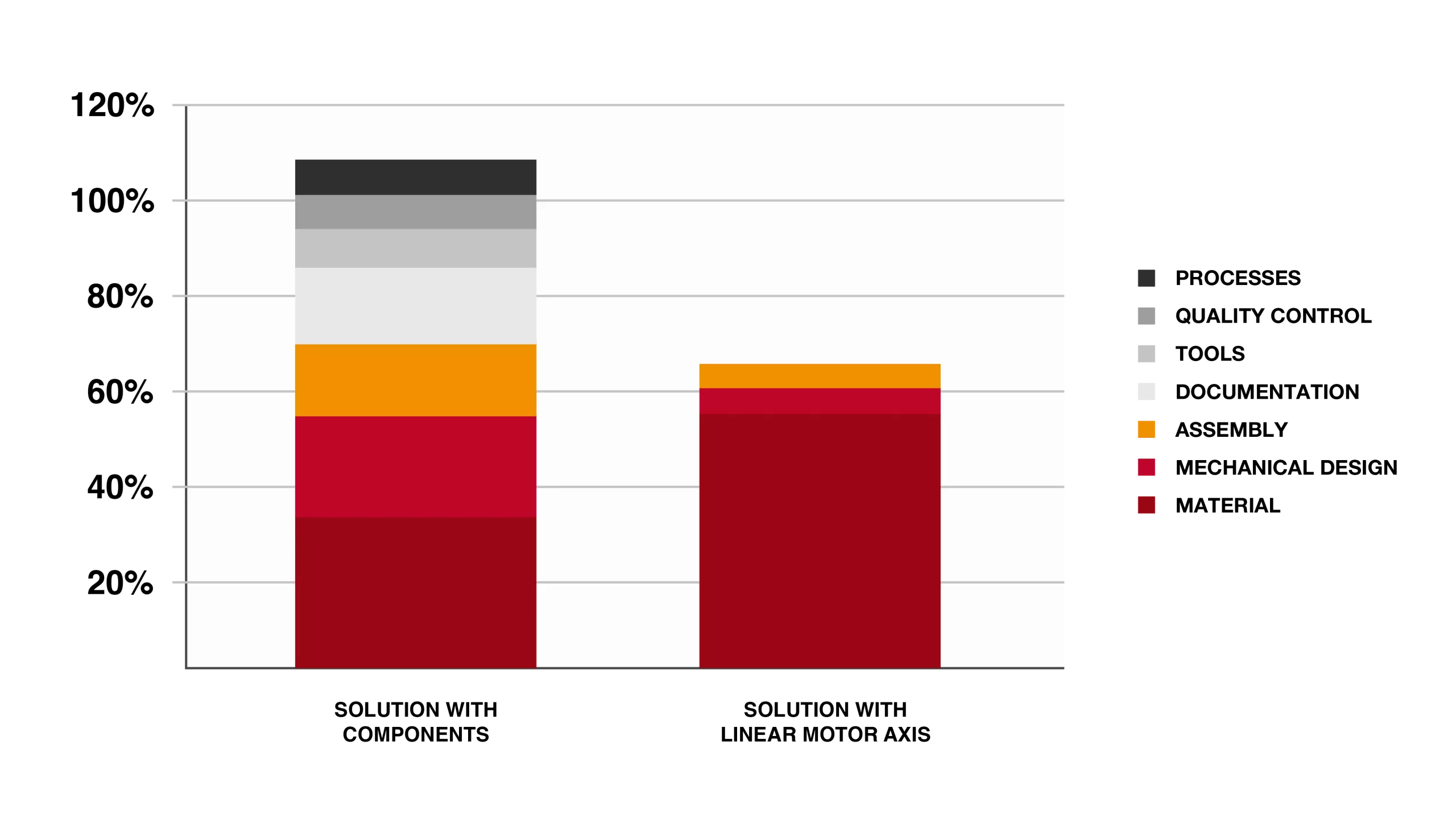Hi mechatronics fans!
Welcome to this new post in our Sinadrives blog.
June 2024
In this installment, we will discuss linear modules with linear motors. Each day, this solution gains more traction in the industry due to its easy implementation, versatility, performance, and cost. We will cover the main topics that a mechatronics engineer may encounter when deciding whether to use a complete module or separate components. We will help you make this decision with better judgment, accompanied by a technical-economic study, and, most importantly, help you avoid some of the most common mistakes.
Starting point: differences between linear module solutions and components

Under the term “linear motor components,” we understand the same components mentioned earlier, such as the linear motor, linear guides, linear encoder, and other mechanical parts like the base, carriage, and stops, but without assembly into a unit. They are separate, and it is the customer’s responsibility to create a mechanical design to position all these components and design the mechanical parts. Additionally, once received, it is the customer’s responsibility to assemble them into the machine, align them, test them, and ensure everything is correct.

From here, everything is clear and we can begin our small study.
When is a linear module used and when are components used?
Here are some reasons to determine when using a linear module might be more attractive than using separate components.
In favor of a linear module solution:
Special single machine or a very small series of 1 to 10 units
In this case, the mechanical design must be created from scratch. The technical department faces the challenge of ensuring that everything works perfectly in the prototype and that there are no future issues. This is precisely why using a linear module with a linear motor can be very advantageous, as it has “extensive experience” from other clients and projects, ensuring its reliability.
When a complete linear module is supplied, the customer receives a 3D model, a simulation, a calculation, and an exact price.
On the other hand, if we choose to buy the components and create this special design ourselves, the machinery manufacturer faces several internal processes that must be adhered to, such as:
- Application calculation.
- Supplier evaluation for all components.
- Industrialization.
- Validation of the testing and quality process.
- Manuals and assembly instructions.
- New tools for the assembly and testing process.
If we sum up the costs of all these elements, we will approximately obtain the following cost comparison:

Easy adaptation and scalability of the final product
In this case, it involves machinery that is mass-produced, but each customer can customize certain parameters such as length or moving mass. In these situations, especially when the customer is constantly required to adapt the design to new specifications, using a linear module with a linear motor can be very advantageous for reducing design times. Linear modules with linear motors allow the machinery manufacturer to easily scale their final product in terms of length and load capacity.
Long axes without the need for a precision base
In some cases, even if the machines are repetitive, a self-supporting structural profile can be the solution to reduce costs. Take, for example, a 5-meter cutting machine, where the customer must prepare a precision base to mount all the components. This requires a solid, stabilized, and machined structure, whereas with a linear module solution, it is sufficient to have 4-5 non-machined pillars where the module can be mounted. This allows for substantial savings in the fabrication of the base and reduces both costs and assembly time.
Other advantages that a linear module solution can offer
In addition to the linear module itself, a series of additional components are required to complete the application. These include cable carriers, cables, connection plates, brackets, brakes, and servo drivers. All these components can be easily added to the supply package, reducing time to market, costs, and potential functionality issues.
In favor of a component-based solution:
Repetitive machines manufactured in medium or large series
Any repetitive machine, manufactured in medium or large series, can benefit from using components. As shown in the graph, the cost of components can be approximately 40% lower in this case, which can be crucial for achieving a competitive final price.
Demanding application
In the case of demanding applications in terms of precision, speed, and size, using components may be the only option because there might not be a linear module that meets all the application requirements. Here, we are referring to machine tools, precision machines, or large-scale machines where linear modules of that size simply do not exist.
False beliefs and common mistakes
What if I start receiving many orders but need to reduce costs?
Nowadays, the most important factor when introducing a new product to the market is time. The fastest one takes all the rewards. Using pre-assembled modules allows for a reduction in this time and ensures deadlines are met. There are no surprises or potential compatibility issues. If tomorrow the machine starts selling in larger quantities, a new mechanical design can be made using exactly the same module components, ensuring the same performance and precision while reducing the cost by approximately 40%.
The linear module is expensive
Nowadays, no one can confirm this. If we add up the costs of design and other factors, we can clearly see that the cost of a module is approximately 50% lower than an internally designed solution.
I have to pay a lot if I need a small modification or customization
Let our experts advise you. Customization can cost very little if the same change was made for another client in the past and we already have the development done.
It is not compatible with my driver, and I have to modify the entire electrical system
You do not have to modify your control system (CNC/PLC/PC/IPC) or the driver. In 90% of cases, there is absolutely no need to change anything. We are compatible with all servo driver manufacturers and will assist you with the initial setup.
Frequently asked questions
What is the lead time for a linear motor module?
The standard lead time is 4 weeks. For special axes with custom-made elements, the lead time can vary up to 8 weeks.
Technical support during the design phase
You provide us with the data of your application, and we take care of the rest. You receive a calculation of forces and moments, motor power, motor consumption (for selecting a suitable servo driver), an offer, and 3D drawings. If it is a multi-axis system, the drawing will include connection plates, mounting plates, cable carriers, and all other necessary accessories. This way, you only need to check if it fits into your machine design.
Summary: Linear Modules and Components.
Linear modules with integrated linear motors are pre-assembled electromechanical solutions that offer significant advantages in terms of easy implementation, versatility, and cost. They are ideal for unique machines or small series as they reduce design and assembly times, allow for quick adaptations, and scale easily. While separate components can be more economical for large series and demanding applications, pre-assembled modules reduce compatibility issues and ensure delivery schedules. Moreover, they debunk the perception of being expensive and difficult to customize, providing comprehensive technical support and compatibility with various controllers and drivers.







Get Social